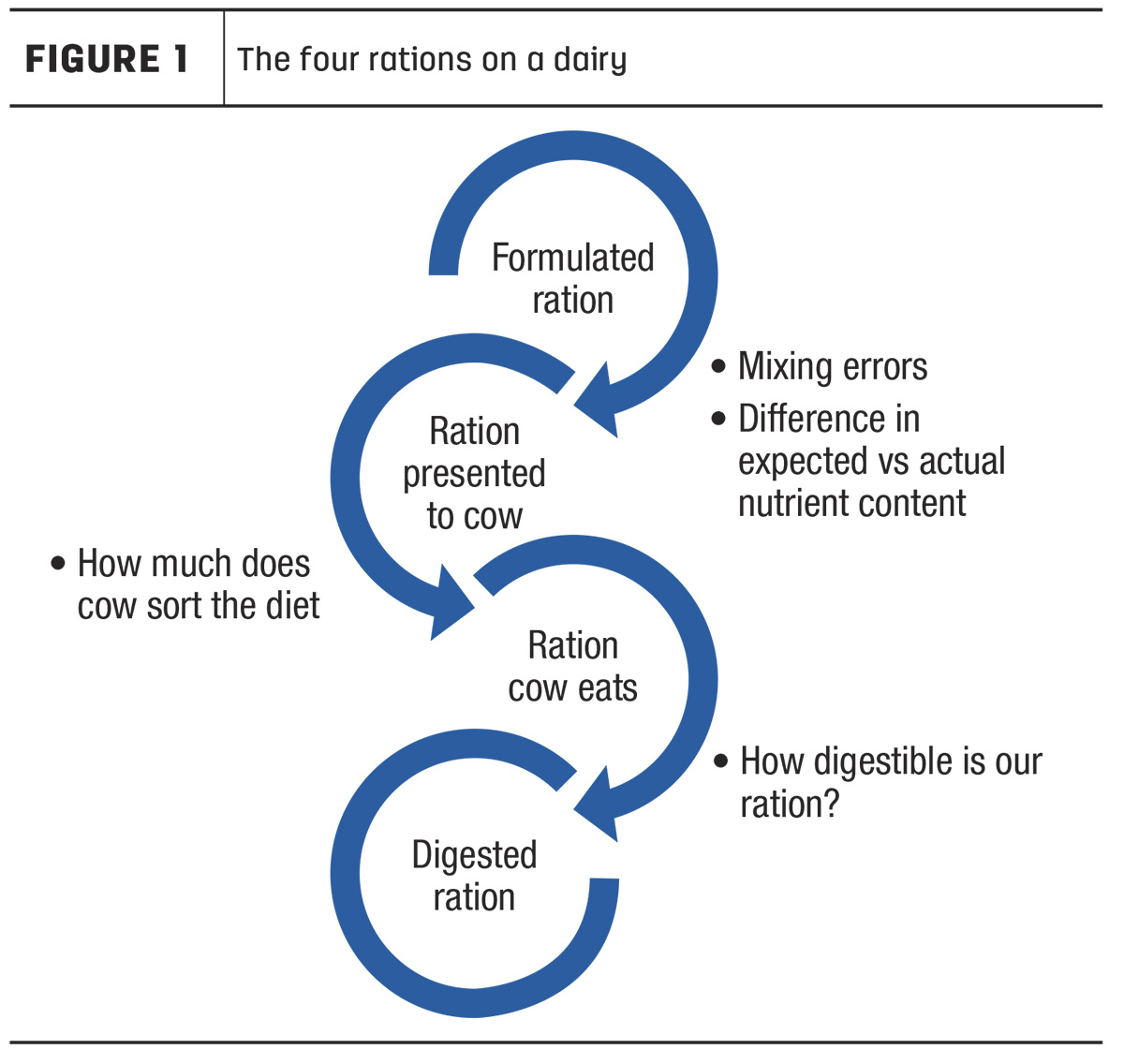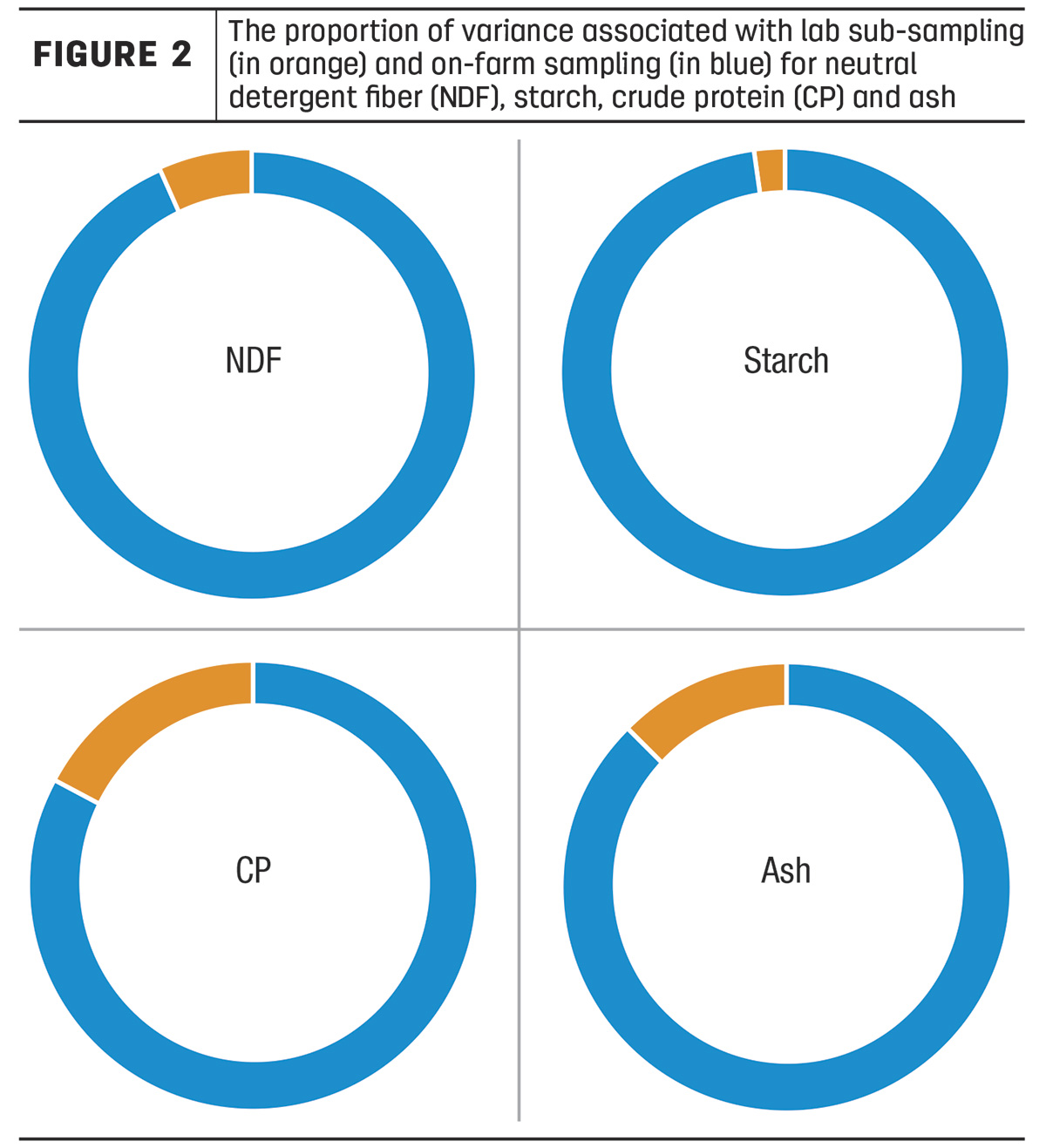As I watch athletes on TV performing at the top of their fields, I wonder what routines they follow to help them achieve success at such a high level. Consistency is key, and I must think regularity in workouts, nutrition and training is an integral part of their success.
High-performing dairy cattle can be likened to high-performing athletes, and their ability to perform to their full potential is also tied to their routine’s consistency. From milking to feeding, our steadiness on the farm is an important part of herd success. However, it can be challenging to reach the desired level of consistency when there are so many sources of variation on the farm.
In my early undergraduate days, I learned about the four rations on a dairy: the formulated ration, the ration mixed and delivered to the cow, the ration eaten by the cow and the ration digested by the cow. All these different steps offer an opportunity for variability, and understanding what sources contribute to variability in each step is critical to improvement (Figure 1).

Understanding potential sources of variation on farms can help us identify areas for improvement. Research efforts aimed at quantifying which of these sources will have the biggest impact on the end result can help us best target our time and resources to make the most impactful improvements. In research, this is often referred to as variance partitioning. Variance partitioning is used across many different fields, including sports, to help predict outcomes and focus advancement efforts. Focusing on feed and total mixed ration (TMR) consistency, we break the variability opportunities into several categories: day-to-day variability, sampling variability, subsampling variability and analytical variability.
The difference between the formulated and the fed ration can be attributed to many sources. Differences in nutrient content between the feed library values and actual values on-farm is just one example. For commonly sampled feeds such as forages, sampling with enough frequency to catch day-to-day changes can help reduce variability. Research suggests that dairies larger than 1,000 cows sample forages three times per week to help accommodate this nutrient variability. There can also be sizable changes in commodity nutritional values due to things such as yearly shifts, supplier changes and regional variability in feedstuffs.
Another notable source of variation between expected and fed rations is mixing errors on farms. One study found that, when evaluating 26 California dairies on mixer loading, the deviation between actual and target ranged from less than 2% for some dairies to greater than 5% for others. The study further associated this deviation with a ration cost difference of up to $5.20 per ton. Loading accuracy varied greatly farm to farm and feeder to feeder. This study also noted that while some feeds were more accurately loaded, including corn and almond hulls, others such as corn silage, hay and canola had larger deviations from the target amount.
Two researchers have teamed up on several occasions to evaluate feed and TMR variability. In one such study, they tracked monthly variation and sampling plus analytical variation in TMRs on 47 dairies. They found that for dry matter (DM), month-to-month changes were the greatest source of variability. But for crude protein (CP), neutral detergent fiber (NDF), acid detergent fiber (ADF) and ash, variation-associated sampling and analytical testing made up a greater percentage of the total variability.
On the heels of this study, the University of Wisconsin – Madison and our laboratory took things a step further, setting up a trial aimed at breaking out on-farm sampling, laboratory subsampling and analytical variation in dry cow TMR samples. This study found that sampling on-farm accounted for more variability than lab sub-sampling for all nutrients, with starch having the largest amount of variability associated with farm sampling. Starch also had the largest coefficient of variation of all major nutrients tested. More detail on the variance associated with on-farm sampling versus in-lab subsampling can be seen in Figure 2.

This showcases the importance of adhering to proper sampling techniques on farms. Sampling as close to feeding as possible, taking several samples along the bunk, combining those samples into a bucket, mixing by repeated scooping and dropping, and a repetitive quartering and subsampling procedure can all help minimize variation. Additionally, multiple samples should be taken and averaged to assess nutrient content.
Practice may make perfect when it comes to shooting a basketball, but what are the downstream effects of consistent TMRs on dairy cattle performance? Recently a research paper found that deviation in total amount of feed or individual ingredients had a slight quadratic effect on milk production. Additionally, researchers found that for each 0.5% decrease in the coefficient of variation of net energy of lactation, milk production increased 6.5 pounds and dry matter intake (DMI) increased 2 pounds. This also increased efficiency by 4.3%. Finally, research found that by testing forages three times per week and updating the ration when nutrient changes were outside of outlined control limits, energy-corrected milk increased by 2.7 pounds, and income over feed cost increased by 12 cents per head per day. By following this testing and ration update protocol, DM and CP more closely matched formulated ration versus a standard protocol.
Taking small steps like monitoring mixed accuracy, evaluating tolerance limits and maintaining an appropriate sampling schedule on-farm can help improve feed consistency. Improving TMR consistency and ensuring what is fed to cows closely matches the formulated ration can help farms increase milk production. Incorrectly mixed rations not only hinder performance but can have a significant impact on ration costs. Finally, remember to avoid using single samples to assess benchmarks and improvements when looking to promote TMR and feed consistency for your herd’s top-performing athletes.











